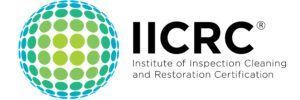Learn About Radon Testing Services
Radon testing measures the levels of radon gas in a building or home. Radon is a naturally occurring, odorless, and colorless gas found in soil, rocks, and water. It is produced by the decay of uranium and other radioactive elements in the earth's crust. Radon gas can seep into buildings through cracks in the foundation, walls, and floors and build to dangerous levels.
The U.S. Environmental Protection Agency (EPA), the U.S. Surgeon General, and the Centers for Disease Control and Prevention (CDC) all strongly advise that ALL homebuyers have an indoor radon test performed before buying or taking occupancy. They also recommend reducing radon levels if elevated radon concentrations are found.
How Does Radon Get into Your Home?
- Cracks in solid floors
- Construction joints
- Cracks in walls
- Gaps in suspended floors
- Gaps around service pipes
- Cavities inside walls
- Sump pump basins
- Crawlspaces
Why Choose Radon Testing?
Radon is a health hazard. Breathing it over prolonged periods can present a significant health risk to families nationwide. Every county in North Carolina has areas with high and moderate radon concentrations. All homes should be tested regardless of geographic location or foundation type.
According to the U.S. Surgeon General, indoor radon is the leading cause of lung cancer in nonsmokers and the second leading cause overall.
These organizations acknowledge and warn that radon is a national health risk:
- American Lung Association
- American Medical Association
- Environmental Protection Agency
- National Academy of Sciences
- National Council on Radiation Protection and Measurement
- U.S. Surgeon General
- World Health Organization
Radon Testing Procedure and Reporting
Radon testing is performed by measuring the levels of radon gas in the air using specialized equipment such as a radon detector or a continuous radon monitor. The test findings can help determine whether radon gas levels are above the recommended levels and whether any mitigation measures are required to reduce radon exposure. According to the EPA, since it is a carcinogen, any level of radon can cause cancer. The safest level of radon gas is no radon gas.
Radon Act 51, passed by Congress, set the natural outdoor level of radon gas (0.4 pCi/L) as the target radon level for indoor radon levels. Two-thirds of all homes exceed this level explaining why more than 20,000 Americans die of radon-related lung cancer yearly. As a comparison, this exceeds the number of 17,900 drunk driving fatalities annually.
Radon testing is suggested every two years or whenever there are changes to the building, such as renovations or additions.
Call (919) 214-5000 now – we can assist you.













